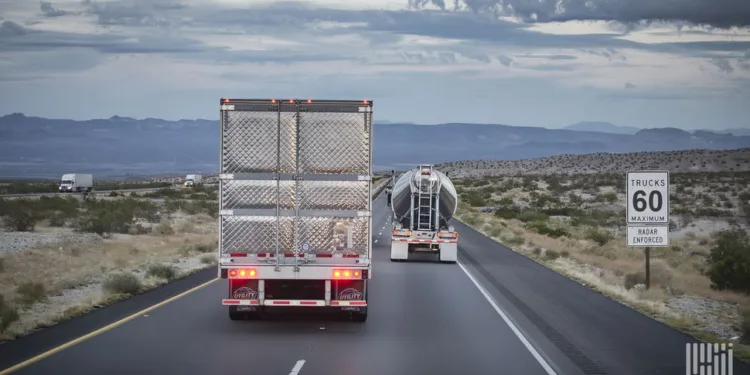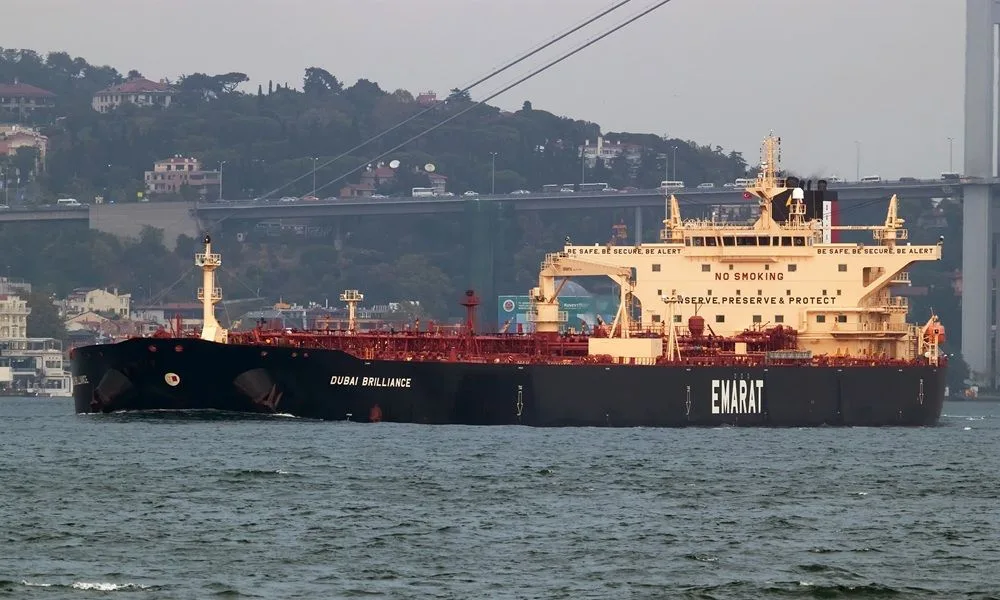WASHINGTON — Proposals that would have limited speeds for large trucks to as low as 60 mph lacked enough safety and economic data to justify moving forward, according to federal regulators.
FMCSA and the National Highway Traffic Safety Administration, acting on a directive issued by Transportation Secretary Sean Duffy in June, canceled the two proposed rulemakings: the first issued 2016 under the Obama administration – by request from the American Trucking Associations, Schneider National, and others – and a followup proposal issued in 2022 under the Biden administration.
The rule would have applied to trucks with a gross weight of over 26,000 lbs.
“In light of significant policy and safety concerns and continued data gaps that create considerable uncertainty about the estimated costs, benefits, and other impacts of the proposed rule, FMCSA and NHTSA have decided to withdraw the proposal,” the agencies stated in notices posted on Wednesday.
The controversial rulemakings, which generated over 16,000 public comments, pitted large trucking companies and safety advocates against independent truckers and smaller carriers.
As with safety groups, large carriers touted the proposed safety benefits of slower speeds. Large fleets have also been investing in speed limiters to improve their vehicles’ fuel economy.
But independent truck drivers saw the mandate as an attempt to be forced into closer competition with their larger rivals by slowing their transit times and increasing their equipment costs. Smaller carriers also argued that mandating truck speeds would actually make roads less safe.
“By establishing a one-size-fits-all federal mandate restricting heavy-duty CMVs [commercial motor vehicles] to a speed separate from passenger vehicles, this regulation would create dangerous speed differentials between CMVs and other cars” and thereby increasing the likelihood of crashes, wrote a group of 17 associations, including the Owner-Operator Independent Drivers Association, in a January letter to President Trump days before he took office.
The 2016 proposed rule analyzed engine speeds mandates of 60, 65, and 68 mph. At a 65 mph set speed, the proposed rule would save between 63 and 214 lives annually, according to the agencies, which they monetized at between $716 million and $2.4 billion, using 2013 data, and result in $848 million in fuel and emissions savings based on then-current price estimates.
However, given recent advances in crash avoidance technologies such as automatic emergency braking (AEB) and forward collision warning (FCW) systems, “NHTSA and FMCSA believe a portion of the crashes that they assumed would be mitigated by speed limiters may also be mitigated by AEB and FCW systems,” the agencies stated.
In addition, they asserted, “it remains unclear whether implementing the [rule] would lead to a net increase in crashes, including those involving motorists striking the rear of CMVs at a device-limited speed, which NHTSA and FMCSA have been unable to quantify,” they stated. “Research varies on the topic of speed differentials and their impact on crash rates.”
FMCSA and NHTSA gave several other reasons for their decision to withdraw the rulemakings, including:
- Uncertainty related to daily driving distance limits imposed on the industry, and the resulting effect of a potential increase in the overall number of trucks on the roads to compensate for the lost freight-hauling capacity.
- Inability to estimate the economic value lost due to the depreciation of goods as a result of slower travel speeds, particularly to time-sensitive deliveries such as those in the agricultural industry.
- Inability to account for the costs of potential delays to other vehicles unable to pass slower moving heavy vehicles.
- Undercutting states’ ability to set speed limits deemed appropriate on their roadways.
Related articles:
- Trucking, safety groups line up against anti-speed limiter bill
- Bill would force FMCSA to back off truck speed controls
- Legal challenges ahead for truck speed, hours-of-service rules?
Click for more FreightWaves articles by John Gallagher.
The post Feds axe truck speed limiter mandate citing data gaps appeared first on FreightWaves.





















